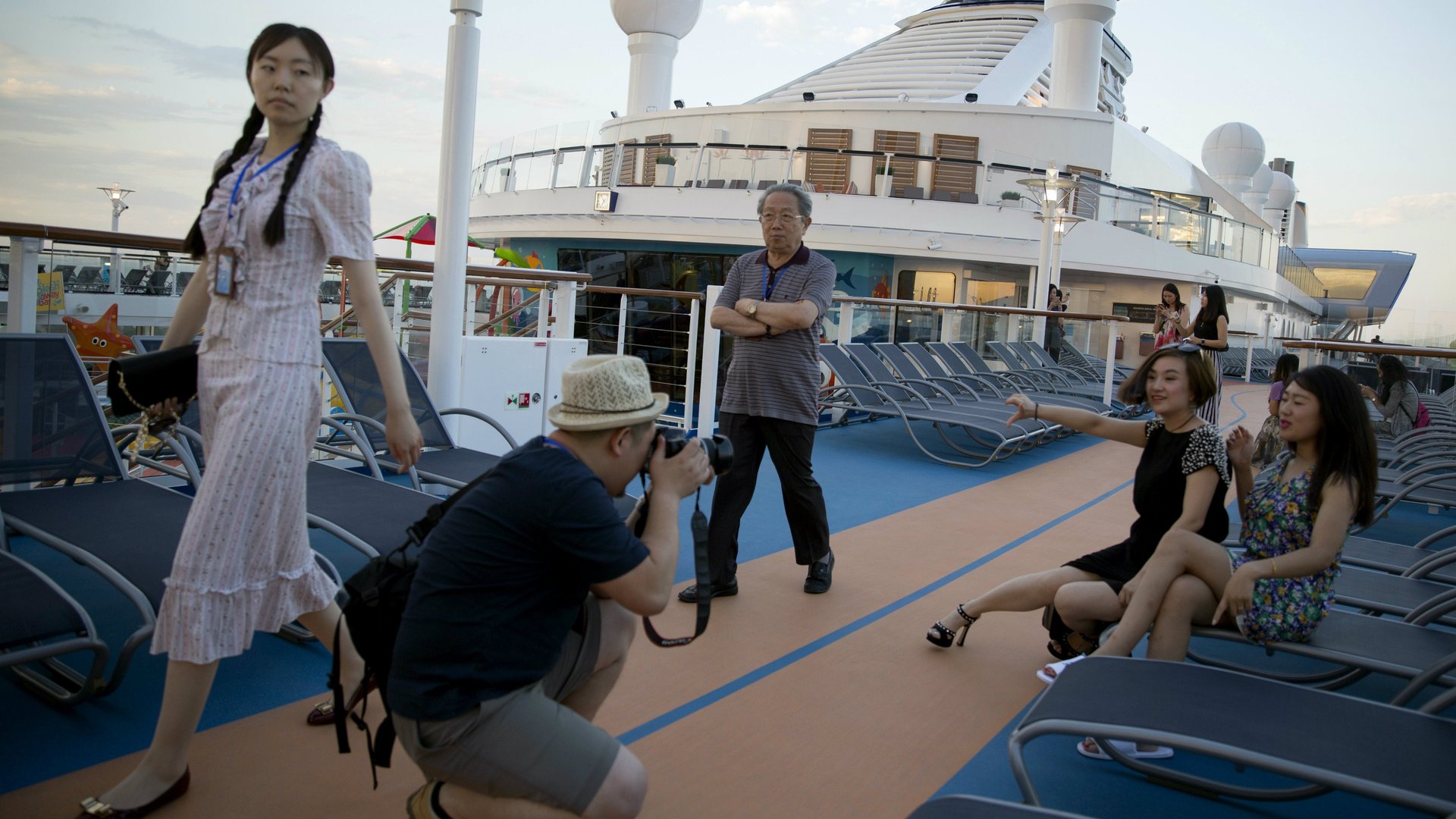Royal Caribbean is betting big on Chinese cruisers, and not just in China
The cruise industry has long set its sights on China as the next big source of consumers to climb aboard its gleaming megaships. For many lines, the results have been mixed. After a 10-year effort to build its brand in China, Royal Caribbean Cruises appears to be seeing dividends.


The cruise industry has long set its sights on China as the next big source of consumers to climb aboard its gleaming megaships. For many lines, the results have been mixed. After a 10-year effort to build its brand in China, Royal Caribbean Cruises appears to be seeing dividends.
In its quarterly earnings call this week, CEO Richard Fain referred to “demographic shifts” that were working in the cruise line’s favor and, crucially, a Chinese market that’s outperforming the company’s overall business. While most Chinese passengers are still booking itineraries that start in China, there was a 75% increase in guests booking a non-China itinerary compared to three years ago, the company’s chief financial officer said. China-based bookings for itineraries in both Europe and Alaska more than doubled.
In 2018, 28.2 million people took a cruise (pdf), according to the industry’s trade body, and China accounted for 2.4 million of of the total. Royal Caribbean says it carried more than half a million Chinese passengers last year.
It’s not just about convincing the growing Chinese middle class to try out a cruise for the first time. Brand loyalty is vital for cruise lines; the industry often inspires a kind of cliquey fandom, with passengers identifying with one line and going on repeat cruises across a fleet. That’s at least part of the reason why Royal Caribbean will roll out a second ship in China in 2019.
The 4,246-passenger Spectrum of the Seas will be the largest and most expensive cruise ship in Asia, joining a sister ship that is only three years old when it debuts in June. Spectrum will cater to Chinese guests with private karaoke studios and a hybrid approach to dining that caters to western and Chinese palates. And Royal Caribbean hopes it will help give Chinese cruisers a reason to repeat their vacation—vital to the cruise business model—on a newer, shiner ship.
Royal Caribbean seems to be finding success where the other “big three” cruise lines have not. Earlier in 2018, Norwegian Cruise Lines redeployed its built-for-China vessel, Norwegian Joy, in North America, citing a larger earning potential there. Predictions early in 2018 foresaw a cooling of the Chinese cruise market due in part to over-saturation, a trend that Royal Caribbean seems to have sailed past, for now.